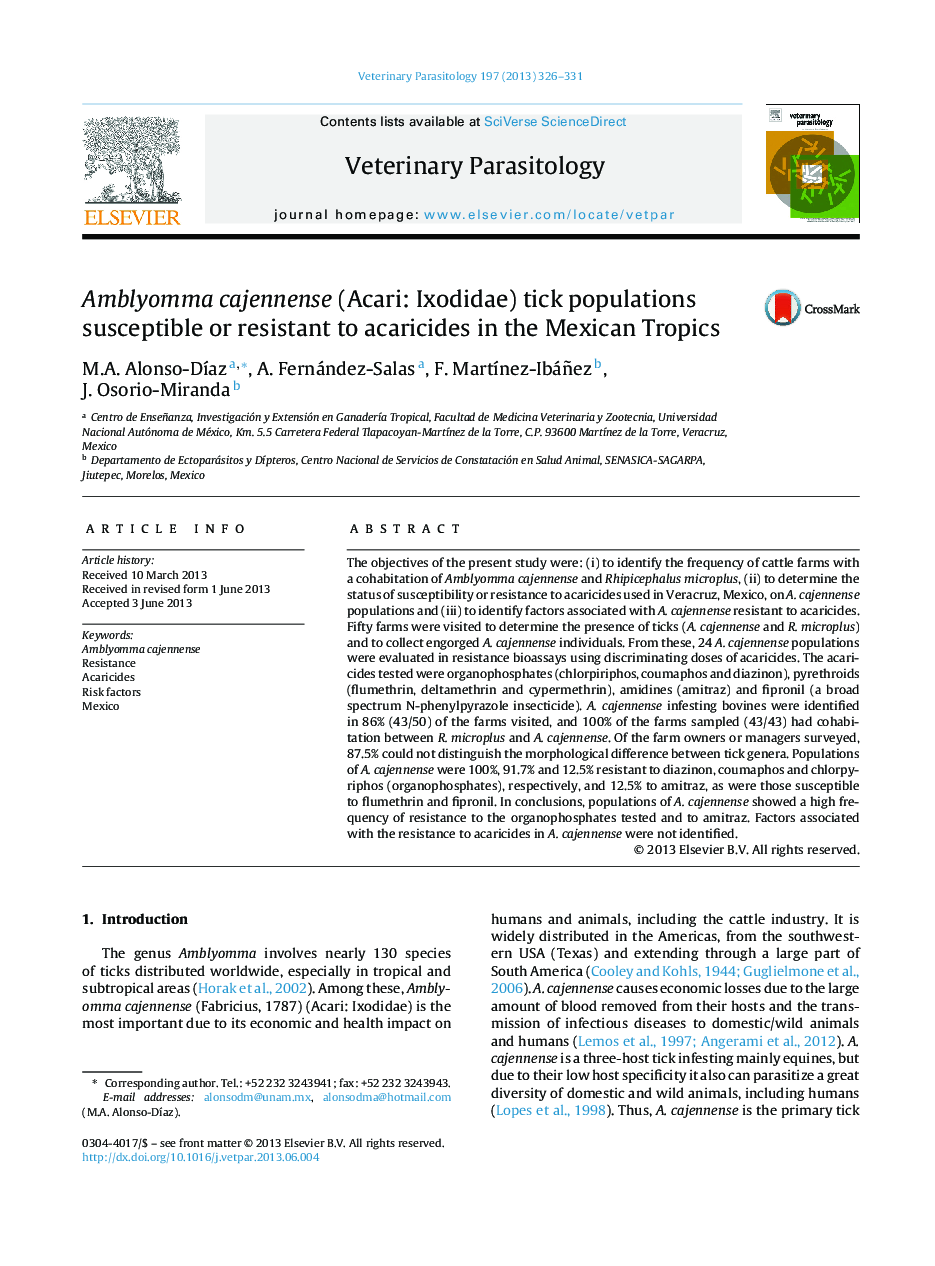| Article ID | Journal | Published Year | Pages | File Type |
|---|---|---|---|---|
| 5803661 | Veterinary Parasitology | 2013 | 6 Pages |
The objectives of the present study were: (i) to identify the frequency of cattle farms with a cohabitation of Amblyomma cajennense and Rhipicephalus microplus, (ii) to determine the status of susceptibility or resistance to acaricides used in Veracruz, Mexico, on A. cajennense populations and (iii) to identify factors associated with A. cajennense resistant to acaricides. Fifty farms were visited to determine the presence of ticks (A. cajennense and R. microplus) and to collect engorged A. cajennense individuals. From these, 24 A. cajennense populations were evaluated in resistance bioassays using discriminating doses of acaricides. The acaricides tested were organophosphates (chlorpiriphos, coumaphos and diazinon), pyrethroids (flumethrin, deltamethrin and cypermethrin), amidines (amitraz) and fipronil (a broad spectrum N-phenylpyrazole insecticide). A. cajennense infesting bovines were identified in 86% (43/50) of the farms visited, and 100% of the farms sampled (43/43) had cohabitation between R. microplus and A. cajennense. Of the farm owners or managers surveyed, 87.5% could not distinguish the morphological difference between tick genera. Populations of A. cajennense were 100%, 91.7% and 12.5% resistant to diazinon, coumaphos and chlorpyriphos (organophosphates), respectively, and 12.5% to amitraz, as were those susceptible to flumethrin and fipronil. In conclusions, populations of A. cajennense showed a high frequency of resistance to the organophosphates tested and to amitraz. Factors associated with the resistance to acaricides in A. cajennense were not identified.
